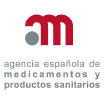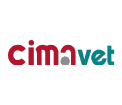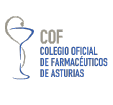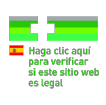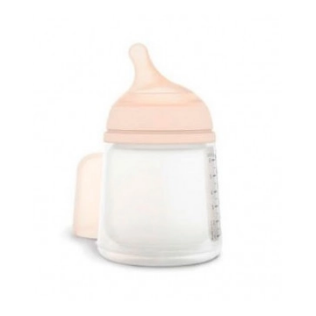 View larger
View larger 188415
Suavinex Biberon Anticolic Zero Lactancia Mixta +0m 180ml
11,43 €
Flow bottle adaptable to the baby's suction force. With ultra thin and tilted silicone teat. Thanks to its anti-colic bag it prevents air intake.
With this product, you earn 22 loyalty point(s). 22 point(s) = 0,22 €.
ACTION AND DESCRIPTION
Anticolic bottle with breastfeeding teat.
Inclined angle.
Flat and symmetrical shape.
Skin color.
Super fine.
Designed to look as much as possible to the mother's nipple and minimize confusion, it allows the baby to return easily to the chest or any other bottle teat.
ALERGIA AL LATEX
It doesn't contain latex.
CONSERVATION AND DACITY
The term "cleanness" of children's dishes does not imply the same meaning for all people, therefore it is advisable to make a series of recommendations in order to achieve the same routine for all people who care for the infant.
The cleaning process must constitute a habit, a daily routine that must always be done in the same way, so that regardless of the person who takes care of the cleaning, the result is optimal and guarantees the asepsia of the material.
The cleaning of the child's cheek is fundamental, because the infant's body has a weak antigenic capacity, so that an infection, such as a gastroenteritis, can have very serious consequences.
All the material that will be in contact with the neonate must have optimal hygienic conditions.
- Before preparing the bottle, wash your hands well, with soap and dry them with a clean towel.
- Any microorganism should be removed by boiling or using the usual sterilizers.
While the baby is fed by his mother, the monitoring of hygiene is reduced to the few items that can get into the mouth, which are the fingers and the pacifier, but the step to artificial breastfeeding, especially if it is prior to 4 months, implies, not only that the contribution of the immune defenses containing the mother's milk is lost, but, and above all, that a hot bacteria is incorporated into the rest, because
The routine should start when a shot ends: "After each shot, the bottle should be washed with plenty of hot water, soap and a scobilla."
- A series of used and washed elements can be accumulated (the number depends on the type of technique chosen), for their sterilization, usually once a day, and are left dry.
- In the market there are different types of sterilizers, based on various physical or chemical procedures, to eradicate microbial load.
In case of resistant thermal materials there are pills or solutions that act in cold.
There is the option of sterilizers that use the germid effect of the water vapor in boiling or that originated in various electrical appliances.
(a) Cold sterilization
Chemical process that uses the oxidant action of hypochloric acid, under the form of solution or tablets
It allows to sterilize the items only by introducing them (biberons, teats, threads, pacifiers, bites or toys), in a bucket with water and a chemical solution (under the form of solution or tablets).
The time of sterilization varies, and ranges between half and one hour.
The solution should be renewed every 24 hours to prevent possible infections.
The sterilized elements must be clarified.
(b) Heat sterilization
The boiling water destroys the pathogenic microorganisms.
Sterilization occurs through the water vapor and lasts 10 to 20 minutes.
It is previously filled with water the bottle up to two thirds of its volume, placing it face down so that the hot steam passes more easily.
PRECAUTIONS AND WARNINGS
Biberons must be provided with a volume scale in milliliters.
The accuracy of the measures indicated in a bottle is very important: since, if the proportion of water and milk powder is not maintained, a burden may be too high on the kidney of the infant, or too much water may be given regarding the milk that actually contains a bottle.
This also occurs if the powder is added badly: "Use the measure that is included in the package or powder pot, well rooted and not fill it."
Food risks with the bottle:
1. Aerophagia: During the intake, the bottle should be well tilted to prevent the baby from ingesting an excess of air that could cause severe colic pain.
2. Burns: Sometimes, especially if microwave is used, the body of the bottle is not heated, but the content may be close to the boil. The temperature of the milk or papylla should be checked before it is given to the neonate, to prevent burning.
3. Affective problems: The baby should never be deprived of the positive affective aspects of breastfeeding. It is therefore important that while the bottle is given, the emotional relationship of parents with the newborn is enhanced with words, kisses or caresses.
4. Waste of materials: Given the high temperatures the bottle is subjected to, material detachment could occur, which could block the airway or the migration of toxic products. The choice of quality products guarantees safety in this regard.
5. Overflow of food.
Always use this product under the supervision of an adult.
Continuous and prolonged fluid suction can cause decay.
Inspect the teat carefully before each use and pull it in all directions. Discard it to the first sign of deterioration or fragility.
Keep out of reach of children all components that are not in use.
Do not leave the tetin in direct contact with sunlight or other heat sources, nor leave it longer than the recommended submerged in sterilizing solution. All this can damage the tetina.
Never use teats as a pacifier.
Always check the food temperature before the shot.







